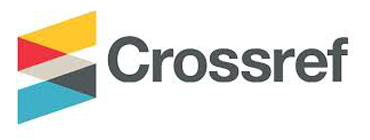MEASURING ANXIETY TOWARDS RESEARCH AND THESIS WRITING AMONG ISLAMIC COLLEGE STUDENTS: A MIXED-METHODS STUDY
Abstract
Full Text:
PDFReferences
Albertyn, R., & Bennett, K. (2021). Containing and harnessing uncertainty during postgraduate research supervision. Higher Education Research & Development, 40(4), 661–675. https://doi.org/10.1080/07294360.2020.1775559
Armin, D.S., & Siregar, A.M.P. (2021). EFL teacher’s pedagogical beliefs in teaching at an Indonesian university. Jurnal Tarbiyah, 28(2). http://dx.doi.org/10.30829/tar.v28i2.1119
Biggs, J., & Tang, C. (2011). Teaching for quality at university. Society for Research into Higher Education, Buckingham, England. 95–110. https://doi.org/10.1080/14703297.2013.839332
Bond, M., Buntins K., Bedenlier S., Zawacki-Richter O., Kerres M. (2020). Mapping research in student engagement and educational technology in higher education: A systematic evidence map. International journal of educational technology in higher education, 17(1), 1–30. https://doi.org/10.1186/s41239-019-0176-8
Chan, C. K. Y., Wong, H. Y. H., & Luo, J. (2021). An exploratory study on assessing reflective writing from teachers’ perspectives. Higher Education Research & Development, 40(4), 706–720. https://doi.org/10.1080/07294360.2020.1773769
Chan, H., Mazzucchelli, T. G., & Rees, C. S. (2021). The battle-hardened academic: an exploration of the resilience of university academics in the face of ongoing criticism and rejection of their research. Higher Education Research & Development, 40(3), 446–460. https://doi.org/10.1080/07294360.2020.1765743
Chiesi, F., Primi, C., & Carmona, J. (2011). Measuring Statistics Anxiety: Cross-Country Validity of the Statistical Anxiety Scale (SAS). Journal of Psychoeducational Assessment, 29(6), 559–569. https://doi.org/10.1177/0734282911404985
Delaney, D., Stewart, H., Cameron, R., Cardell, E., Carruthers, S., Love, A., Pearson, A., & Calleja, P. (2020). Supporting the development of program leaders in higher education: An action research case study. Australian Journal of Career Development, 29(3), 205–217. https://doi.org/10.1177/1038416220927796
Dewaele, J.-M., Witney, J., Saito, K., & Dewaele, L. (2018). Foreign language enjoyment and anxiety: The effect of teacher and learner variables. Language Teaching Research, 22(6), 676–697. https://doi.org/10.1177/1362168817692161
Durham, J. (2014). Ethical challenges in cross-cultural research: A student researcher’s perspective. Australian & New Zealand Journal of Public Health, 38, 509–512. https://doi:10.1111/1753-6405.12286
Eckert, J. (2020). “Shoot! Can We Restart the Interview?”: Lessons From Practicing “Uncomfortable Reflexivity.” International Journal of Qualitative Methods. https://doi.org/10.1177/1609406920963810
Edmonds, W. & Kennedy, T. (2017). Explanatory-sequential approach. In An applied guide to research designs (pp. 196-200). SAGE Publications, Inc, https://www.doi.org/10.4135/9781071802779
Fitzpatrick, D., Collier, D. A., Parnther, C., Du, Y., Brehm, C., Willson-Conrad, A., Beach, A., & Hearit, K. (2021). Experimental evidence for a first-year experience course plus mentoring on moderate-income university students’ engagement, achievement, and persistence. Higher Education Research & Development, 40(3), 491–507. https://doi.org/10.1080/07294360.2020.1761303
Fortuna, N.D., Marchela, C., Charolina, B., Febrina, S., Mirza, R. (2022). Efikasi diri dan motivasi berprestasi dalam pembelajaran berbasis online selama masa pandemic Covid-19. Jurnal Tarbiyah, 29(1). http://dx.doi.org/10.30829/tar.v29i1.1347
Guntzviller, L. M., Yale, R. N., & Jensen, J. D. (2016). Foreign Language Communication Anxiety Outside of a Classroom: Scale Validation and Curvilinear Relationship With Foreign Language Use. Journal of Cross-Cultural Psychology, 47(4), 605–625. https://doi.org/10.1177/0022022116635743
He, X., Zhou, D., & Zhang, X. (2021). An Empirical Study on Chinese University Students’ English Language Classroom Anxiety With the Idiodynamic Approach. SAGE Open. https://doi.org/10.1177/21582440211037676
Heretick, D. M. L., & Tanguma, J. (2021). Anxiety and Attitudes Toward Statistics and Research Among Younger and Older Nontraditional Adult Learners. The Journal of Continuing Higher Education, 69(2), 87–99. https://doi.org/10.1080/07377363.2020.1784690
Heron, M., Gravett, K., & Yakovchuk, N. (2021). Publishing and flourishing: writing for desire in higher education. Higher Education Research & Development, 40(3), 538–551. https://doi.org/10.1080/07294360.2020.1773770
Huang, Y. (2021). Doctoral writing for publication. Higher Education Research & Development, 40(4), 753–766. https://doi.org/10.1080/07294360.2020.1789073
Ivankova, N. V., Creswell, J. W., & Stick, S. L. (2006). Using Mixed-Methods Sequential Explanatory Design: From Theory to Practice. Field Methods, 18(1), 3–20. https://doi.org/10.1177/1525822X05282260
Jan, S. U., Anwar, M. A., & Warraich, N. F. (2020). The relationship between emotional intelligence, library anxiety, and academic achievement among the university students. Journal of Librarianship and Information Science, 52(1), 237–248. https://doi.org/10.1177/0961000618790629
Kondowe, C., & Booyens M. (2014). A student’s experience of gaining access for qualitative research. Social Work, 50, 146–152. https://doi:10.15270/50-1-17
Li, Z., & Liu, H. (2021). Mixed Methods: Interviews, Surveys, and Cross-Cultural Comparison. Journal of Mixed Methods Research, 15(1), 138–140. https://doi.org/10.1177/1558689820950858
Liu, M., & Wu, B. (2021). Teaching Anxiety and Foreign Language Anxiety Among Chinese College English Teachers. SAGE Open. https://doi.org/10.1177/21582440211016556
Medeiros, P. (2017). A guide for graduate students: Barriers to conducting qualitative research among vulnerable groups. The York University Student Journal of Anthropology, 3.
Miles, M. B., Huberman, A. M., & Saldaäna, J. (2014). Qualitative data analysis: A methods sourcebook (Third edition.). SAGE Publications, Inc..
Nielsen, T., & Kreiner, S. (2018). Measuring statistical anxiety and attitudes toward statistics: The development of a comprehensive Danish instrument (HFS-R). Cogent Education, 5(1), 1521574. https://doi.org/10.1080/2331186X.2018.1521574
O’Bryant, M., Natesan Batley, P., & Onwuegbuzie, A. J. (2021). Validation of an Adapted Version of the Statistical Anxiety Scale in English and Its Relationship to Attitudes Toward Statistics. SAGE Open. https://doi.org/10.1177/21582440211001378
Olave-Encina, K., Moni, K., & Renshaw, P. (2021). Exploring the emotions of international students about their feedback experiences. Higher Education Research & Development, 40(4), 810–824. https://doi.org/10.1080/07294360.2020.1786020
Onwuegbuzie, A. J. (2013). Development and score-validation of the Research Anxiety Rating Scale. International Journal of Research in Education Methodology, 4(2), 503–515. https://doi.org/10.24297/ijrem.v4i2.3927
Özdin, S., & Bayrak Özdin, Ş. (2020). Levels and predictors of anxiety, depression and health anxiety during COVID-19 pandemic in Turkish society: The importance of gender. International Journal of Social Psychiatry, 66(5), 504–511. https://doi.org/10.1177/0020764020927051
Sabti, A. A., Md Rashid, S., Nimehchisalem, V., & Darmi, R. (2019). The Impact of Writing Anxiety, Writing Achievement Motivation, and Writing Self-Efficacy on Writing Performance: A Correlational Study of Iraqi Tertiary EFL Learners. SAGE Open. https://doi.org/10.1177/2158244019894289
Shelmerdine, A. J. (2018). Library Anxiety: Stories, Theories and Possible Solutions. Journal of the Australian Library and Information Association, 67(4), 343–352. https://doi.org/10.1080/24750158.2018.1534281
Thummapol, O., Park, T., Jackson, M., & Barton, S. (2019). Methodological Challenges Faced in Doing Research With Vulnerable Women: Reflections From Fieldwork Experiences. International Journal of Qualitative Methods, 18. https://doi.org/10.1177/1609406919843022
DOI: http://dx.doi.org/10.30829/tar.v30i1.2414
Refbacks
- There are currently no refbacks.

Jurnal Tarbiyah by UIN Sumatera Utara Medan is licensed under a Creative Commons Attribution-NonCommercial-ShareAlike 4.0 International License.
Based on a work at http://jurnaltarbiyah.uinsu.ac.id/index.php/tarbiyah.
Permissions beyond the scope of this license may be available at http://jurnaltarbiyah.uinsu.ac.id/index.php/tarbiyah/about/submissions#copyrightNotice.
















